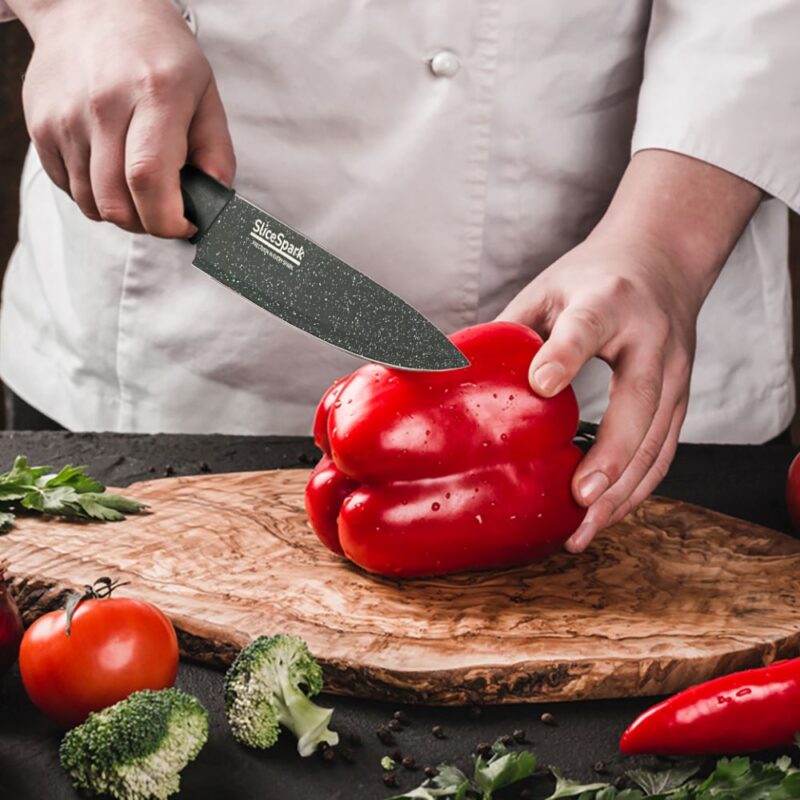Slices Park
A Beginner’s Guide to Mastering Knife Skills
In the realm of culinary mastery, the art of wielding a knife with finesse is an essential skill that transcends the kitchen threshold. For novice chefs setting out on their gastronomic journey, mastering the nuances of knife skills is akin to unlocking the gateway to culinary creativity. Let’s embark on a culinary adventure and explore the fundamentals that will empower you to handle your knives with confidence and precision.
1. Choosing the Right Knife: Your Culinary Companion
Before you dive into the world of knife skills, acquaint yourself with the anatomy of a chef’s knife. The blade, handle, and tang all play a crucial role. Invest in a quality chef’s knife – the workhorse of the kitchen – with a sharp, sturdy blade and a comfortable grip to become an extension of your hand.
2. Grip and Stance: The Foundation of Precision
Hold your chef’s knife with a firm yet relaxed grip. The pinch grip, where your thumb and index finger pinch the base of the blade, provides optimal control. Adopt a balanced stance with feet shoulder-width apart, distributing your weight evenly for stability.
3. The Rocking Motion: Effortless Chopping and Dicing
Master the rocking motion – a rhythmic and efficient technique. With the knife’s tip anchored on the cutting board, pivot the blade back and forth while guiding it with your free hand. This motion allows for seamless chopping and dicing without lifting the blade entirely from the board.
4. Basic Knife Cuts: Building Blocks of Culinary Artistry
Explore fundamental knife cuts that form the building blocks of countless recipes:
- Julienne: Create thin, uniform strips for salads and stir-fries.
- Dice: Achieve evenly-sized cubes for stews and casseroles.
- Mince: Finely chop herbs and garlic for vibrant flavor.
- Chiffonade: Roll and slice leafy greens into delicate ribbons.
5. Knife Safety: A Non-Negotiable Priority
Safety is paramount in the kitchen. Always keep your fingers tucked behind the knife blade and use a damp cloth under the cutting board to prevent slipping. Develop the habit of keeping knives sharp to reduce the risk of accidents and ensure smoother cutting.
6. Practice and Patience: The Road to Mastery
Knife skills, like any craft, require practice and patience. Start with basic cuts and gradually progress to more advanced techniques. Consider practicing with vegetables that have a firm texture and provide a consistent surface for cutting.
7. Maintaining Your Blade: A Sharp Endeavor
A sharp knife is a chef’s best ally. Regularly hone your knife using a honing rod and sharpen it when needed. Proper maintenance ensures longevity and precision in your cutting endeavors.
8. Respect Your Tools: Cleaning and Storage
Show your knives the care they deserve by handwashing them with mild soap and warm water. Dry them promptly and store them in a knife block or magnetic strip to maintain their sharpness and prevent damage.
Embark on your journey to knife mastery with a blend of technique, precision, and a dash of patience. As you navigate the kitchen landscape, these foundational knife skills will not only enhance your culinary creations but also instill in you the confidence to tackle any recipe with the grace of a seasoned chef. Happy slicing!

